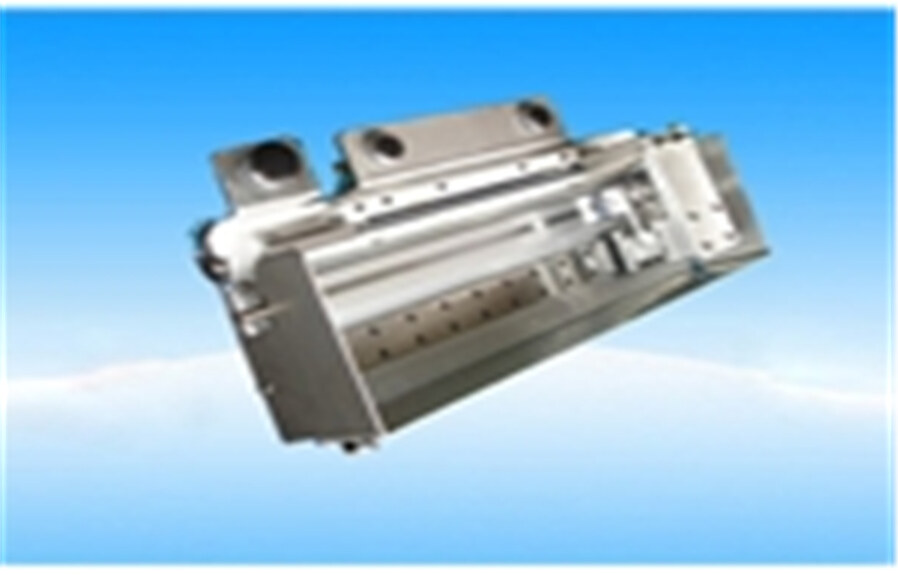1. Classification of shafts:
1) Classified by load:
Rotating shaft: A shaft that bears bending moment and torque at the same time, which is more common, such as the shaft of a gearbox.
Transmission shaft: A shaft that is only or mainly subjected to torque, such as the transmission shaft of an automobile.
Mandrel: A shaft that is only subjected to bending moments but not torque. Divided into: shaft rotation, such as a railway vehicle shaft, the shaft is subject to variable stress; the shaft does not rotate, such as supporting a sliding shaft, the shaft is subject to static stress.
2) According to the shape:
Straight axis: divided into optical axis and stepped axis. The function of the stepped shaft: It is convenient to install and fix the parts and make the strength of each shaft section similar. It is commonly used in general machinery. Several nouns of stepped shaft: journal: the supported part of the shaft, where the bearing is installed; shaft head: the part where the hub is installed; shaft body: the part that connects the journal and the shaft head; shaft extension: the extension end of the shaft.
Crankshaft: used in reciprocating machinery, mostly used in special machinery.
Flexible steel wire shaft: It is composed of several layers of steel wires that are closely attached to each other. It is flexible to use and can flexibly transmit torque (torsion and rotation) to any position.
Generally, the shaft is made of solid, but in order to reduce weight (such as large hydraulic turbine shaft, aero engine shaft, etc.) or to meet the working requirements (if other parts or lubricating oil need to pass through the center of the shaft), a hollow shaft can also be used.

2. The shaft design process:
1) Material selection: consider shaft strength, rigidity and wear resistance requirements; shaft heat treatment method; process requirements, manufacturing process, source and price of materials, etc. Commonly used 40, 45, 50, 40Cr quenching and tempering or normalizing.
Note: Carbon steel is cheaper than alloy steel and has low sensitivity to stress concentration. Alloy steel has better mechanical properties and heat treatment properties than carbon steel, but it is more expensive. It is mostly used for shafts with large load-bearing size and limited quality or higher wear resistance and corrosion resistance requirements. Alloy steel is highly sensitive to stress concentration. When designing alloy steel shafts, stress concentration should be avoided or reduced structurally, and the roughness value of its surface structure should be reduced.
2) Preliminary calculation: Estimate the diameter d by analogy or preliminary calculation d according to the torque. Pay attention to the influence of keyway on shaft strength. When there is one keyway, the shaft diameter should be increased by 3%~5%; when there are two keyways, it should be increased by 7%~10%.
3) Structural design: shape, size, calculation and drawing are carried out intersectingly.
4) Accurate calculation: The general shaft uses the equivalent bending moment method to check the strength of 2~3 dangerous sections; the important shaft also needs to use the safety factor method to check the strength. Shafts with high rigidity requirements must be calculated for stiffness; high-speed shafts must be calculated for vibration stability.
Three, the structural design of the shaft:
The failure modes of the shaft include fracture, wear, vibration and deformation. The design of the shaft should satisfy sufficient strength and rigidity, good vibration stability and reasonable structure.
1. The principle of shaft structure design is:
(1) The force is reasonable, strive for equal strength, and minimize stress concentration;
(2) The positioning of the parts on the shaft is accurate, simple, unique, reliable, and easy to assemble and disassemble;
(3) Good manufacturability.
2. The content of the structural design: determine the reasonable shape and all structural dimensions of the shaft.
The structural design should be known: the schematic diagram of the shaft device (parts and positions on the shaft); the main parameters and dimensions of the transmission parts: the power and speed transmitted by the shaft.
3. The conditions that the shaft structure design should meet are:
(1) The shaft and the parts mounted on the shaft have precise working positions;
(2) The parts on the shaft are easy to disassemble and adjust;
(3) The shaft should have good manufacturing technology.
4. Several commonly used fixing methods and precautions:
1) Axial fixation of parts on the shaft:
(1) Shaft shoulder and collar (table): It is composed of positioning surface and transition fillet. Note that the transition fillet should be smaller than the chamfer of the parts on the shaft (otherwise the parts cannot be tightly attached), generally take the height of the positioning shaft shoulder (single side) h=(007~0.1)d (Note: d is the shaft diameter), the width of the collar b≥1.4h.
(2) Check the manual for the height of the shaft shoulder or collar where it is matched with the rolling bearing. Generally, the height of the shaft shoulder should not exceed 2/3~4/5 of the thickness of the inner ring to facilitate the disassembly of the bearing.
(3) Retaining rings, nuts, sleeves, etc. The inner diameter of the sleeve and the shaft are generally a dynamic fit, and the structure and size of the sleeve can be flexibly designed according to needs, but the wall thickness of the sleeve is generally greater than 3mm (Note: not suitable for high-speed shafts).
(4) Shaft end retaining ring and conical surface.
(5) Set screws and lock retaining rings, etc.
(6) Pin. The structure is good in manufacturability, and it also plays the role of axial and circumferential fixation. However, the shaft needs to be drilled, which severely weakens the strength of the shaft and destroys the balance of the rotor.
(7) Clamping ring. The structure of the clamping ring is complex, the positioning accuracy is poor, and the balance of the rotor is destroyed, but the shaft has a simple structure, which is suitable for the positioning of parts on the optical shaft.
(8) Interference fit. The structure is simple, has a fixed effect, and the positioning accuracy is poor. Axial fixation is also made when axial fixation is made.
(9) Nut. Threads are made on the surface of the shaft, which weakens the strength of the shaft. Strong load bearing capacity and reliable fixation.
(10) Shaft end pressure plate. Drill threaded holes at the end of the shaft without weakening the strength of the shaft. Strong load bearing capacity and reliable fixation. Can only be used for shaft ends.
In order to ensure reliable axial positioning, the length of the shaft section of the part that matches with gears and couplings should generally be 2~3mm shorter than the width of the hub.
2) Circumferential fixation of parts on the shaft:
The circumferential fixation of the parts on the shaft can adopt keys, splines, pins, interference fits and expansion sleeve connections.
Keys, splines, interference fits, pins, forming, and elastic rings are collectively referred to as hub connections.
Precautions:
(1) The keyway is opened on the same machining line on the shaft to reduce the number of clamping. If the diameters of the shaft sections with key grooves are not much different, use key grooves of the same width as much as possible to reduce the number of tool changes.
(2) The crescent key is opened on the same side, otherwise the shaft will be weakened more severely.
(3) When using a wedge-shaped key with a hook head, the upper surface of the key and the bottom surface of the hub groove each have a slope of 1:100.
3) Manufacturing and installation requirements:
(1) It is convenient for the parts to be assembled and disassembled into a stepped shaft, and all parts on the shaft should be able to reach the matching position without interference.
(2) In order to facilitate processing and inspection, the diameter of the shaft matching the part should be rounded and selected from the standard diameter series. (See GB/T2822-2005); The part that matches the rolling bearing should conform to the size of the inner hole of the rolling bearing.
(3) The threaded shaft section should be left with an undercut groove, and the diameter of the threaded shaft section should meet the standard diameter of the thread.
(4) Grinding shaft end should have grinding wheel overtravel groove or grinding wheel trimming.
(5) In addition to the special requirements of the structure, in order to facilitate the assembly of parts and remove the burrs, the shaft end should be machined with a 45° chamfer.
(6) The guide taper is often machined in the loading section of the interference fit parts (the angle of the inclined plane is generally 10°), so that the parts can be pressed in more smoothly.
(7) The fillet on the same shaft should be the same value as much as possible, the undercut should be the same width, and the chamfer size should be the same.
4) Reduce stress concentration and improve stress conditions:
(1) Avoid sudden changes in shape and make the stepped shafts at all levels more uniform.
(2) Rounded corners are used at the change of the cross section, and should not be too small (check relevant manuals for specific dimensions).
(3) Avoid opening horizontal holes and grooves on the shaft. When horizontal holes must be opened (blind holes should be avoided), the edges must be rounded (the hole should be chamfered).
(4) In the structure of important shafts, unloading groove B, transition collar or undercut fillet can be used to increase the fillet radius of the shaft shoulder to reduce local stress.
(5) Making a relief groove B on the hub (reducing the thickness on both sides of the hub) can also reduce the local stress at the interference fit.
(6) Cut an unloading groove on the shaft at both ends of the hub at the interference fit.
(7) Make the diameter of the interference fit part larger than the diameter of the adjacent part.
(8) The undercut groove is rounded.
(9) Increase the fillet radius of the collar and shaft shoulder, and set an intermediate ring if necessary.
5) Improve the surface quality of the shaft and increase the fatigue strength of the shaft.
(1) The rougher the surface of the shaft, the lower the fatigue strength. Therefore, the roughness value of the shaft surface and rounded corners should be reduced as much as possible. (Special attention should be paid when using materials that are sensitive to stress concentration)
(2) The distance between the end of the keyway and the step should not be too small to avoid damage to the transition fillet and reduce the chance of multiple stress concentration sources overlapping.
(3) The smaller the fillet radius at the root of the keyway, the more serious the stress concentration. Therefore, the size of the important axis should be indicated on the parts drawing.
(4) Avoid printing on the shaft and leaving some unnecessary marks, because they may become the source of initial fatigue cracks.
(5) Commonly used surface strengthening treatment methods: heat treatment such as surface induction hardening; chemical heat treatment such as surface carburization, cyanidation, and nitriding; strengthening treatment such as rolling and shot peening. (Rolling and shot peening can generate pre-compression stress on the surface of the shaft, thereby improving the fatigue resistance of the shaft.)
4. Attentions for shaft structure design:
(1) The shoulder length should be slightly shorter than the length of the hub, otherwise the hub cannot be reliably positioned (axially).
(2) The shaft end, shoulder or positioning sleeve that matches the bearing must exceed the height of the inner ring of the bearing, otherwise it will be inconvenient to disassemble the bearing.
(3) Pay attention to whether the length of the key affects the installation of the axial positioning parts, and pay attention to the position of the key opening.


